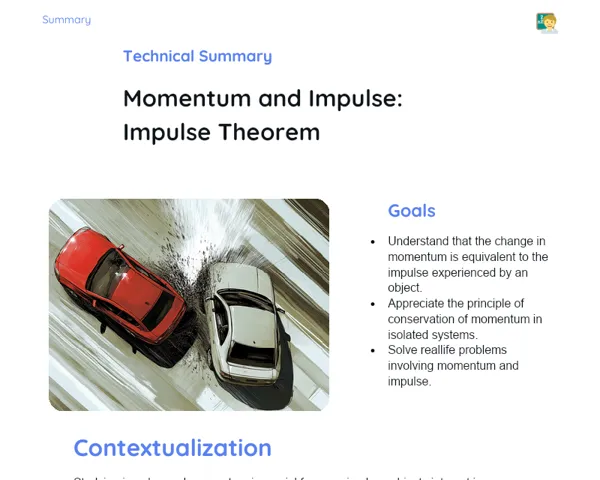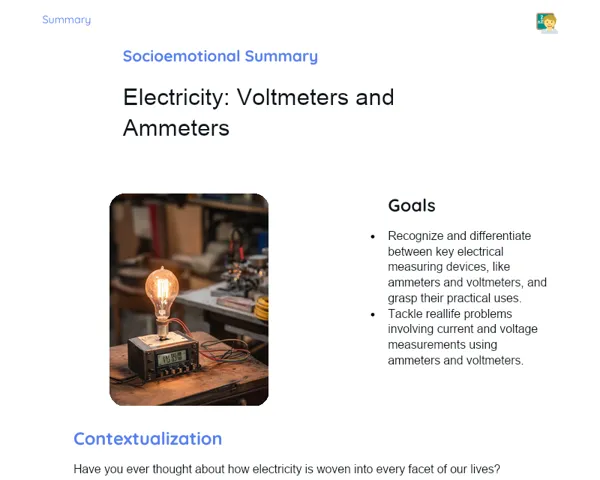Goals
1. Grasp the concept of capacitors in series and the formula for calculating equivalent capacitance.
2. Use the formula for series capacitors to work through real-world problems.
3. Appreciate the significance of series capacitors in electronic circuits.
4. Enhance problem-solving abilities in practical scenarios.
Contextualization
Capacitors play a crucial role in various electronic devices we rely on every day, including mobile phones, laptops, and televisions. They store electrical energy and come in different configurations, including series connections. When capacitors are linked in series, the overall capacitance decreases. Grasping how capacitors function and the method to calculate their equivalent capacitance is vital for addressing challenges in electronic circuits and advancing technology. For example, the proper arrangement of capacitors within renewable energy systems and energy storage devices can greatly improve efficiency and output.
Subject Relevance
To Remember!
Capacitors in Series
When capacitors are connected in series, the electric charge remains consistent across all capacitors, while the total voltage is the sum of the individual voltages. The equivalent capacitance is lower than the smallest individual capacitance, which is advantageous for fine-tuning the total capacitance in circuits.
-
Charge remains constant across all capacitors.
-
Total voltage is the sum of the individual voltages.
-
Equivalent capacitance is lower than the smallest individual capacitance.
-
Useful for fine-tuning overall capacitance in electronic circuits.
Equivalent Capacitance Formula
For capacitors in series, the equivalent capacitance (C_eq) can be calculated using the formula: 1/C_eq = 1/C1 + 1/C2 + ... + 1/Cn. This equation enables us to determine the total capacitance of a group of capacitors connected in series.
-
Formula: 1/C_eq = 1/C1 + 1/C2 + ... + 1/Cn.
-
Facilitates calculating total capacitance for series capacitors.
-
Crucial for designing circuits with specific capacitance.
-
Invaluable for addressing practical challenges in electronics.
Practical Applications
Series capacitors find use in several practical applications, including decoupling circuits, signal filters, and various energy systems. They aid in adjusting capacitance and bolstering circuit efficiency.
-
Utilized in decoupling circuits to separate different sections of a circuit.
-
Integral to signal filters that enhance audio and visual quality.
-
Applied in energy systems to ensure safe and efficient energy storage.
Practical Applications
-
In energy storage solutions, like backup batteries for computers and renewable energy systems.
-
In signal filters that improve sound and picture quality in radios and televisions.
-
In decoupling circuits to segregate various components of an electronic circuit.
Key Terms
-
Capacitor: An electronic device that stores electrical energy as an electric field.
-
Capacitance: A measure of a capacitor's ability to hold electric charge.
-
Equivalent Capacitance: The total capacitance of a group of capacitors arranged in series or parallel.
Questions for Reflections
-
How does the arrangement of series capacitors influence the efficiency and performance of electronic devices we encounter daily?
-
In what ways can understanding series capacitors contribute to the creation of innovative technologies?
-
What are the key differences between series and parallel capacitors, and when is it advisable to use each configuration?
Hands-on Challenge: Building and Analyzing a Series Capacitor Circuit
This mini-challenge aims to reinforce students' comprehension of series capacitors through the hands-on assembly and examination of a simple circuit.
Instructions
-
Form groups of 3 to 4 members.
-
Utilize the provided materials (capacitors of varying values, power supply, connecting wires, multimeter, and breadboard).
-
Assemble a circuit with three capacitors connected in series on the breadboard.
-
Measure the capacitance of each capacitor individually with the multimeter and note the values down.
-
Measure the total capacitance of the series circuit and compare it with the individual values.
-
Calculate the theoretical equivalent capacitance using the formula 1/C_eq = 1/C1 + 1/C2 + 1/C3 and compare it with the practical measurement.
-
Discuss any differences noted between theoretical and practical values within your group and present your conclusions.



